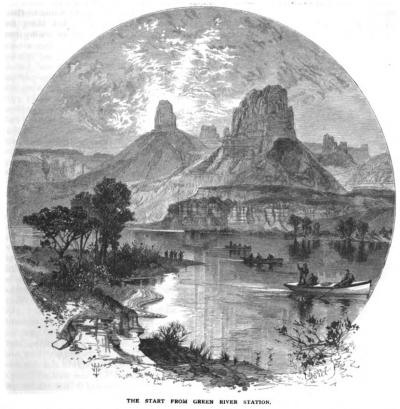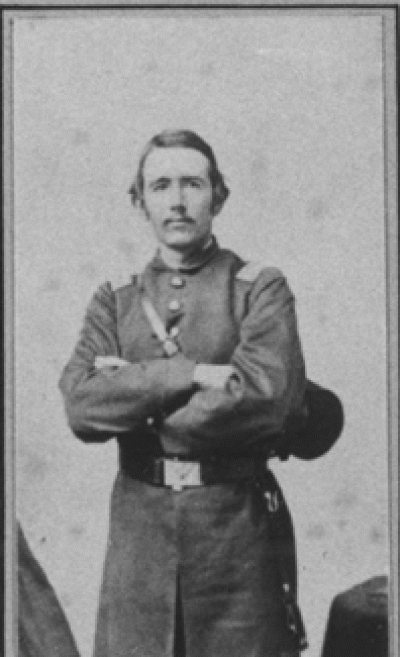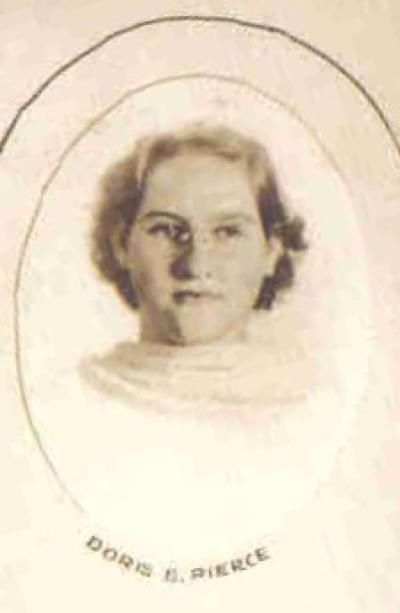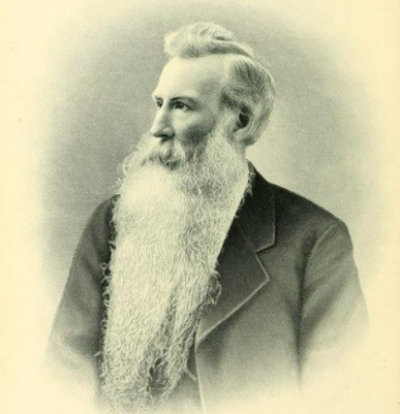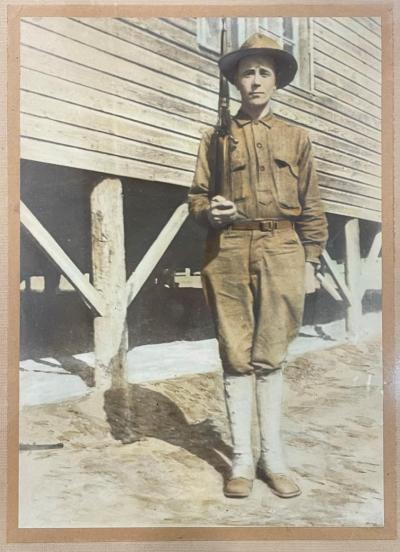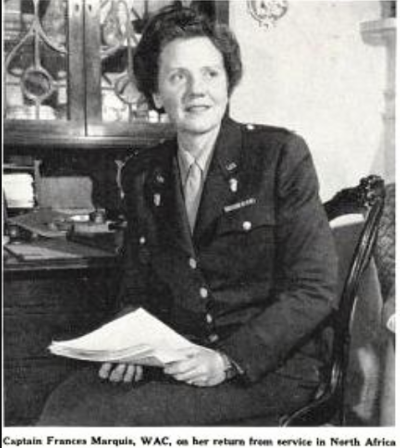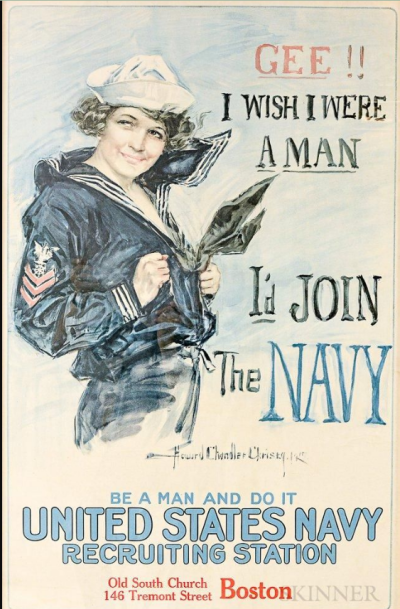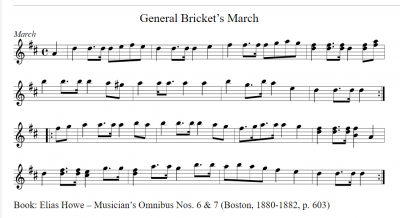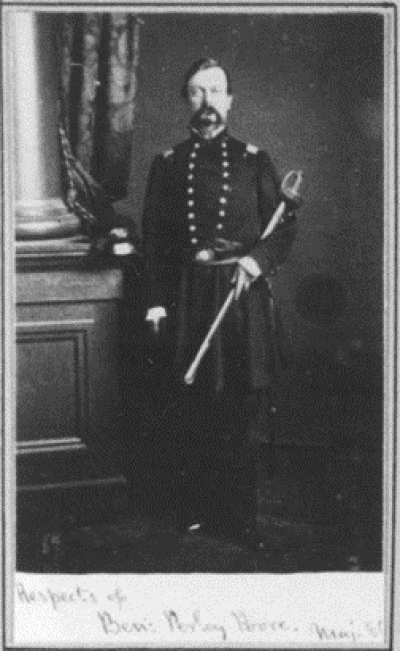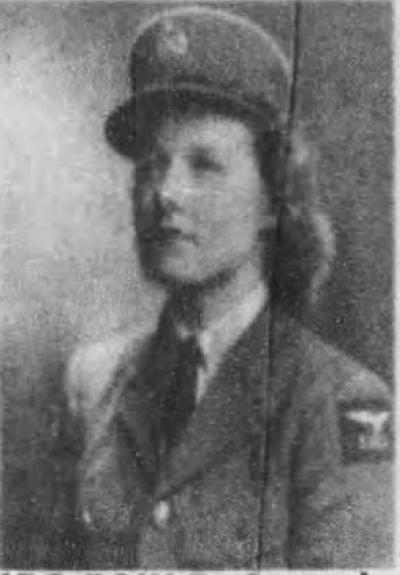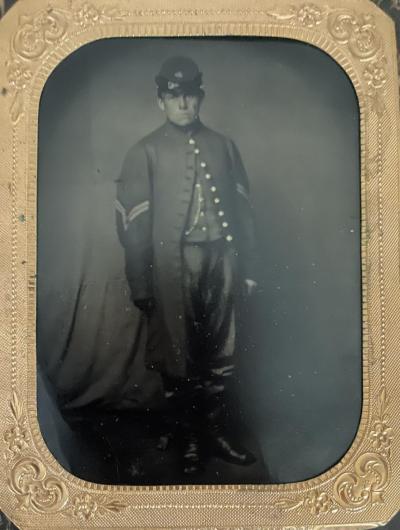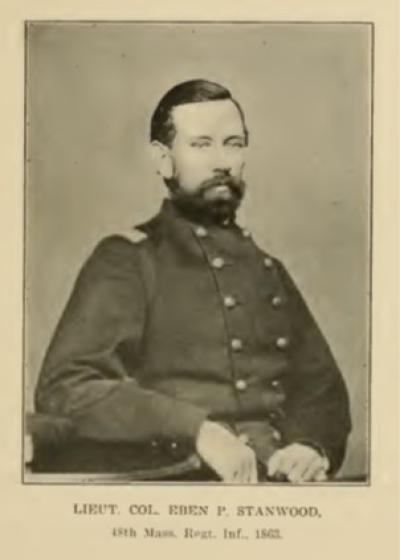A Historic Minute 2022–Of Soldiers & Military
In 2022, the Historical Commission's monthly Minute Histories focused on soldiers and the military. Scroll down to find links to 12 stories below--
January's Minute History tells the story of George Young Bradley, who was born in West Newbury in 1836, and was perhaps the Town’s most notable explorer, having served as oarsman and assistant geologist/naturalist on John Wesley Powell’s 1869 expedition down the Grand Canyon. With a detailed and at times lyrical diary kept secret from his crew mates and his family, Bradley posthumously became the expedition’s most important chronicler. An adventurer with strong ties to home, Bradley grew up in Town and left school to work as a shoemaker. He lived here with his family until he joined the Union Army during the Civil War. He soon returned to shoemaking in West Newbury after being wounded. Several years later he rejoined the Army, which shipped him out west. There he met Powell and was released to serve on the expedition. He returned home to die and is buried with his family at the Bridge Street Cemetery.
Source: Historical Data Systems
February's Minute History is about Isaac Hills Boyd, said to be the bravest of the brave in battle, and one of the most beloved Civil War soldiers in West Newbury history. Born in West Newbury in 1838, he became a lawyer and sought the Republican candidacy for the 17th District in Massachusetts at age 22. Seen as the People’s Candidate, he had a strong loyalty to the people living in the area and those he served with in the 19th Massachusetts Volunteer Infantry Regiment, which experienced significant injuries and deaths fighting in the Army of the Potomac. Often reporting back to the local newspapers about the battles and bravery of his fellow soldiers, Boyd was thought to be invincible. But only few days before the war’s end, he was shot in action, and later died, in Farmville, Virginia. He was 27 years old. He had one of the most decorated funerals in West Newbury history, and in 1874 a newly formed chapter of the Grand Army of the Republic in West Newbury was named the Major Boyd Post # 151 in Isaac Boyd’s honor.
Source: Ancestry.com
The Minute History for March concerns Doris Ellen Pierce, one of the few West Newbury women soldiers in WWII—and one of the few WACs to serve abroad—who was born on November 19, 1919, in Gloucester. Before she turned five, the family returned to West Newbury, where her parents had married and lived as newlyweds. Tightly woven into the Town’s social fabric, the Pierce family joined in civic, religious, and collegial activities. Perhaps in honor of her father’s WWI service in the aviation corps, on June 26, 1943, Pierce enlisted in the Women’s Army Corps, serving in the Army Air Forces. Pierce’s assignments in the Air Transport Command (ATC) took her to Nashville’s Berry Field, on to the Great Falls, MT, air base, and then to Grenier Field (now Manchester Airport). Leaving her posting in nearby NH, in 1945 Pierce sailed across the world to Karachi, British India—the western hub of the ATC’s India-China route. After six months in Karachi, Pierce returned home at war’s end to be discharged in December 1945. Upon her homecoming, Pierce remained active in the WAC reserves, and (with her mother) in the Town’s American Legion Auxiliary. She served for many years as a clerk in West Newbury’s Post Office, retiring with her husband Robert Towne to Texas in 1978. Doris Pierce Towne died in 1998, and is buried at Fort Bliss Cemetery, in El Paso.
Source: Ancestry.com
April’s story features Orin Warren, the individual who perhaps more than any left his stamp on West Newbury’s landscape and look. Warren was born to teachers Isaiah and Ann Walker Warren on January 20, 1833 in Fryeburg, ME. After completing his medical training and a short stint at Boston’s Deer Island immigrant reception center, Warren moved to West Newbury in 1859, serving as a Town doctor. Five months into the Civil War, Warren was serving as an assistant surgeon in the 21st Massachusetts Infantry Regiment, which became part of the North Carolina Expedition that closed almost all that coastline to the Confederacy in early 1862. Warren’s tireless work as surgeon received commendations and resulted in promotions, ultimately to surgeon-in-chief of the 2nd Division, Eleventh Army Corps. When ill health forced his resignation in 1863, Warren returned to West Newbury, assuming the roles of Town doctor and civic activist. Of all his Town improvements, the Edwards Memorial/Carr Post/Soldiers & Sailors Memorial building was his most significant—and contentious—landmark. Orin Warren, the “Grand Old Man of West Newbury,” died here on April 4, 1916 at age 83.
May’s story concerns Charles Lewis Carr, most remembered as West Newbury’s contribution to the 53,402 American combat deaths in the first World War. He was born here on January 7, 1888, the oldest son of Ann Spalding and George Gardner Carr. A lifelong resident, Carr married Sunday school teacher/hometown girl Madeline Archer Trow in 1913. The couple’s lives changed forever on October 5, 1917, when he left for Army training at Camp Devens in Ayer, MA, to serve in the Great War. In May of 1918, he arrived “somewhere in France.” After time in trench warfare, he became part of the Meuse-Argonne offensive, the largest and most costly military operation in American history. In Cornay, France on October 8, 1918, Carr became one of the 26,277 Americans killed in action in that campaign. In 1919, the Town’s newly-formed American Legion Post was named after him, and that organization arranged his full military funeral upon the return of his remains in August, 1921.
Source: U.S. Army Photo
June’s Minute History is about West Newbury's most famous World War II veteran, Frances Keegan Marquis, a woman who was born and raised in West Newbury, and who—notwithstanding her fame, remarkable career, and life in New York City—always maintained ties to her old hometown. In her mid-40s, she left her successful career as an executive in premier women’s organizations to join the first Women’s Army Auxiliary Corps officer training class in 1942. She was chosen to lead the country’s first women’s expeditionary force to serve in General Eisenhower’s North African Headquarters. Upon returning to civilian life, she volunteered in women’s organizations, including as an official observer at the United Nations. Frances Keegan Marquis became a life member of the West Newbury Historical Society, which houses some of her medals and papers
July’s Minute History concerns West Newbury’s first enlisted woman, Yeoman(F) 1st Class Lillian Mabel Farrington Martin, who was born in Boston in 1884 and spent the last years of her life here on Main Street. A bookkeeper before her marriage, Martin enlisted in the Navy in World War I. That women could become yeomen(F) (for female) was made possible by a dire need for clerical workers in wartime, which inspired authorities to exploit a loophole. Congress set up a Naval Auxiliary Reserve force comprising not just men, but “all persons who may be capable of performing special useful service for coastal defense.” Martin, who lived at the time in Reading with her husband and young son, likely commuted to the Boston Naval Yard. After armistice in 1918, female recruitment ended and women reservists were placed on inactive duty, funding lapsed, and women sailors largely forgotten. When widowed and elderly, Martin moved to Town where her son and his family were living. She died in 1973, at the age of 88.
August’s Minute History concerns West Newbury-born Doctor Brigadier General James Brickett, whose “watch out for what you wish for” experience is the stuff of history and song. Brickett’s military career began in the French and Indian War and during the Revolution, saw him leading militia troops at the battles of Bunker Hill and Saratoga. After their decisive victory at Saratoga, the Americans found themselves saddled with almost 6,000 prisoners of war. At a time when the colonists could barely feed and clothe themselves, Brickett was charged with marching the captives to Cambridge. He accomplished this with his own funds, but was never repaid, except with a march tune in his honor.
Source: Civilwardata.com
September’s Minute History is about Benjamin Perley Poore, a journalist, Washington insider, and one of West Newbury’s most famous celebrities in the latter 19th century, who was known as a “soldier in tastes and habits”—though more adept at parade grounds than battle grounds. Once a boys’ company commander, Poore spent considerable expense and effort to raise and outfit a local militia, the First Rifle Battalion, to which he was elected Major in 1852. Under his command, the Rifle Battalion marched and made military displays at picnics and other patriotic celebrations. At the start of the Civil War, Major Poore joined a different local militia, the 8th Regiment, participating in its initial three-month tour of duty. When the 8th was called for a second nine-month tour, a case of lumbago forced Poore’s resignation. He remained supportive of local veterans, hosting gatherings and speaking at regiment reunions, until his death in 1887 at age 67.
Source: Boston Globe
October’s Minute History concerns Pamela Constance Pearson, born in Boston on July 14, 1924 to Canadian-born Marmaduke (Duke) Pearson and Glaswegian Constance Bell Pearson. Although she grew up in Montserrat, MA, her Canadian roots ran deep: she attended college in Ontario and her uncle, Lester Pearson, was a Canadian statesman. In the mid-1940s as World War II raged, Pamela Pearson left life as a Boston debutante for service in the Royal Canadian Air Force (RCAF) Women’s Division. Although Pearson earned her pilot’s wings during her two years in service, she could not have flown planes while on RCAF duty. As reflected in their motto, “We Serve That Men May Fly,” RCAF women were not permitted to work as pilots. Following her parents, who retired to Crane Neck Street, in 1955 she and her husband W. Martin Phillips (an Eastern Airlines Captain and Army Air Corps veteran) purchased Arrowhead Farm on West Newbury’s Turkey Hill Road, where they raised their family.
November’s tale concerns Charles Bradley, who was born in West Newbury in 1842 and enlisted in Company A of the 19th Mass. Infantry Regiment in August of 1862. With the 19th, Bradley took part in some of the best-known battles of the Civil War. During the Wilderness Campaign in May of 1864, Bradley’s war experience took a drastic turn. On the day following the battle at Spotsylvania Courthouse—one of the most vicious of the war—he was captured while on picket duty. Bradley spent nearly a year in Confederate prisons near Richmond and at the infamous Andersonville prisoner of war camp in Georgia. After the war he returned to West Newbury, where he served as a constable from 1880 until his retirement at age 70 in 1912, when he was commended at Town Meeting for his service and patriotism. Bradley lived to age 80 and is buried in the Bridge Street Cemetery.
December’s story is about Ebenezer (Eben) Stanwood, who, due to a battlefield promotion to Lieutenant Colonel, became West Newbury’s highest ranking Civil War soldier. Letters preserved at the G.A.R. Library between Eben and his wife Mary Noyes Stanwood offer a view into lives of a soldier and those left behind. Eight months after his marriage and five months into Mary’s first pregnancy, Eben enlisted as a Captain in the Massachusetts 48th Volunteer Infantry Regiment on August 30, 1862. The 48th was to become part of the expedition to control Port Hudson, LA and thus the upper Mississippi River—a slow-going venture that entailed months of waiting in camp. In an era when childbirth was as dangerous as soldiering in wartime, Eben left for New Orleans three days after his daughter’s birth. At the same time he wrote that life in camp was “a pretty good time,” she was experiencing pain, fever, debilitation, and likely depression, while also coping with a demanding baby and difficult mother-in-law.


